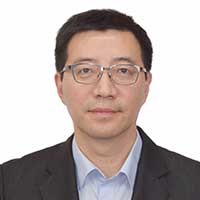Speaker Highlight - Dahong Qian

About
Dr. Dahong Qian is currently a professor at the School of Biomedical Engineering, Shanghai Jiao Tong University. His research interest is in AI in medicine, medical robotics, and medical data secure computing. He had held various engineering and management positions at Analog Devices and OmniVision, etc., before joining academia in 2014. He received his BSE from Zhejiang University, China, his MSE from the University of Texas at Austin and his Ph.D. in Computer Science from Harvard University.
Evolution of AI Medical Imaging in Orthognathic Surgery and Orthodontics
Abstract: AI-driven medical imaging analysis has initiated a paradigm shift in the fields of orthognathic surgery and orthodontics, enabling unprecedented levels of clinical precision. Three-dimensional imaging modalities such as Cone-Beam CT (CBCT) and intraoral scanners provide a comprehensive view of the complex craniofacial anatomy, where the automation of diagnosis and treatment planning continuously attracts the attention of the machine learning community. In this talk, we will trace the evolution of these AI-powered applications and illustrate how they have reshaped the entire workflow from diagnosis to surgical execution.
First of all, we will examine the foundational leap from manual 2D cephalometrics to automated 3D analysis, where deep learning algorithms achieve automatic landmark detection and precise segmentation of anatomical structures on CBCT images. Secondly, we will discuss the pivotal role of AI in virtual surgical planning (VSP), where automated segmentation enables the simulation of complex osteotomies and the digital setup of orthodontic treatments, thereby greatly enhancing the predictability of outcomes.
Finally, we will explore the frontier of predictive modeling and intraoperative guidance, where machine learning models forecast post-surgical soft-tissue changes and treatment stability, and AI-integrated augmented reality (AR) systems are beginning to guide surgeons in real-time.